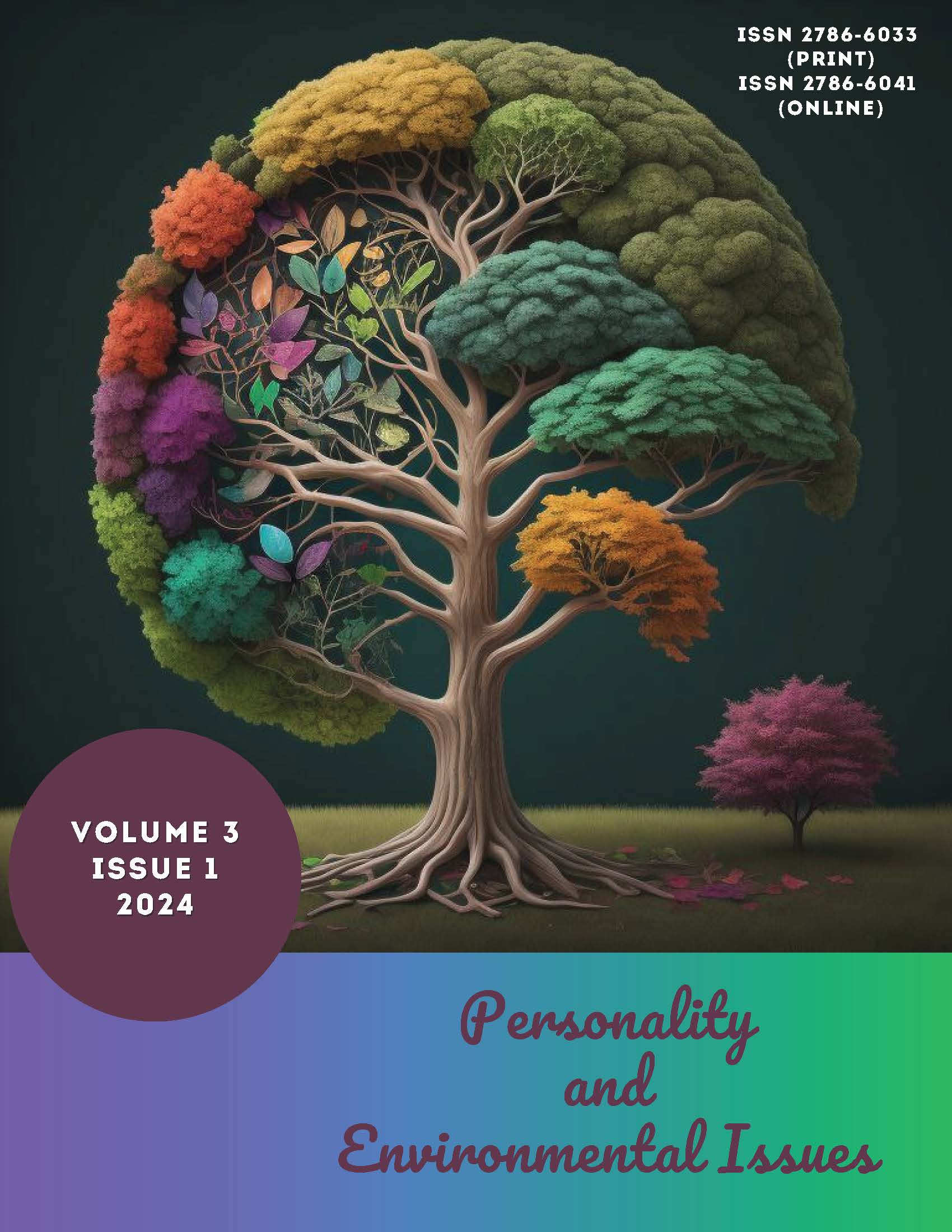Abstract
The research focuses on gender and age aspects of emotional burnout among information technology (IT) professionals and examines the influence of various factors, such as gender and age, on the occurrence and development of emotional burnout in IT workers. The research analyses the relationship between gender and emotional burnout, reveals possible differences in the perception of the working environment, stressful situations, and the ability of coping strategies between men and women in the IT field. The influence of age factors on emotional burnout is also studied, it is analyzed how the levels of stress and burnout change during different stages of career growth. The research aims to identify the specifics of coping with stressful situations and effective methods of preventing emotional burnout for different groups of IT workers. Various aspects of emotional burnout are considered, including stress at work, dissatisfaction with career growth, age, and gender differences in the perception of workload and emotional well-being. The study aims to expand the understanding of the problem of emotional burnout in the context of the IT industry and provides grounds for the development of personalized strategies to support and manage emotional risks in this professional environment. In addition, specific recommendations are offered for the development of gender-sensitive and age-oriented burnout prevention programs (individual support strategies, stress management training and creation of working conditions conducive to maintaining mental health). Also presented are directions for further research in this area for a deeper understanding of gender and age aspects of burnout, studying the relationship between working conditions and emotional burnout, developing, and evaluating the effectiveness of intervention programs, as well as considering the latest technologies and changes in the work environment. These studies will contribute to the expansion of knowledge about emotional burnout and the development of more effective strategies to prevent and overcome it.
References
Maksymchuk, K., Podkorytova, L. (2021). Osoblyvosti emotsiinoho vyhorannia pratsivnykiv IT-sfery yak predstavnykiv profesii subiekt-obiektnoho typu. Psychology Travelogs, (2), 107-116. https://pt.khmnu.edu.ua/index.php/pt/article/download/28/29
Shnaider O. V. (2014). Psykholohichni osoblyvosti emotsiinoho vyhorannia pratsivnykiv sfery Informatsiinykh Tekhnolohii. Naukovi zapysky Natsionalnoho universytetu "Ostrozka akademiia". Seriia : Psykholohiia i pedahohika. – Vyp. 26. – S. 144-148. http://nbuv.gov.ua/UJRN/Nznuoapp_2014_26_33
Vovk, O. (2021). Osoblyvosti syndromu profesiinoho vyhorannia v pratsivnykiv sfery Informatsiinykh Tekhnolohii. Suchasna medytsyna, farmatsiia ta psykholohichne zdorovia, (1(2), 3-26. https://journals.maup.com.ua/index.php/psych-health/article/view/32
Relationship between burnout, effort-reward imbalance, and insomnia among Informational Technology professionals. (2022). Relationship between burnout, effort-reward imbalance, and insomnia among Informational Technology professionals. 11(1), 296. https://doi.org/10.4103/jehp.jehp_1809_21
E. Mellblom, I. Arason, L. Gren and R. Torkar. The Connection Between Burnout and Personality Types in Software Developers. IEEE Software, vol. 36, no. 5, pp. 57-64, Sept.-Oct. 2019. https://doi.org/10.1109/MS.2019.2924769
B. Trinkenreich et al. A Model for Understanding and Reducing Developer Burnout," 2023 IEEE/ACM 45th International Conference on Software Engineering: Software Engineering in Practice (ICSE-SEIP), Melbourne, Australia, 2023, pp. 48-60. https://doi.org/10.1109/ICSE-SEIP58684.2023.00010
Raju, A., Nithiya, D., Tipandjan, A. (2022). Relationship between burnout, effort-reward imbalance, and insomnia among Informational Technology professionals. Journal of Education and Health Promotion, 11(1), 296. https://doi.org/10.4103/jehp.jehp_1809_21
Maudgalya, T., Wallace, S., Daraiseh, N., Salem, S. (2006, May). Workplace stress factors and ‘burnout’ among information technology professionals: a systematic review. Theoretical Issues in Ergonomics Science, 7(3), 285–297. https://doi.org/10.1080/14639220500090638
H. Cameron, B., Butcher-Powell, L. (2006). Gender Differences among IT Professionals in Dealing with Change and Skill Set Maintenance. Interdisciplinary Journal of Information, Knowledge, and Management, 1, 151–157. https://doi.org/10.28945/120
AIS Electronic Library (AISeL) - AMCIS 2012 Proceedings: Theorizing the Dual Role of Information Technology in Technostress Research. (n.d.). https://aisel.aisnet.org/amcis2012/proceedings/EndUserIS/12
Beecham, S., Baddoo, N., Hall, T., Robinson, H., & Sharp, H. (2008, August). Motivation in Software Engineering: A systematic literature review. Information and Software Technology, 50(9–10), 860–878. https://doi.org/10.1016/j.infsof.2007.09.004
Managing workplace Stress and Burnouts in IT Industry in India: A Cross-Sectional Study. (2023, June 19). Journalofcardiovasculardiseaseresearch, 12(05). https://doi.org/10.48047/jcdr.2021.12.05.314
Packirisamy, P., Meenakshy, M., Jagannathan, S. (2017, February 13). Burnout during early career: lived experiences of the knowledge workers in India. Journal of Enterprise Information Management, 30(1), 96–121. https://doi.org/10.1108/jeim-01-2016-0041
Shih, S. P., Jiang, J. J., Klein, G., Wang, E. (2011, November). Learning demand and job autonomy of IT personnel: Impact on turnover intention. Computers in Human Behavior, 27(6), 2301–2307. https://doi.org/10.1016/j.chb.2011.07.009
Marchand, A., Blanc, M. E., Beauregard, N. (2018, June 15). Do age and gender contribute to workers’ burnout symptoms? Occupational Medicine, 68(6), 405–411. https://doi.org/10.1093/occmed/kqy088
Kumaresan, A., Suganthirababu, P., Srinivasan, V., Vijay Chandhini, Y., Divyalaxmi, P., Alagesan, J., Vishnuram, S., Ramana, K., & Prathap, L. (2022, February 18). Prevalence of burnout syndrome among Work-From-Home IT professionals, 71(2), 379–384. https://doi.org/10.3233/wor-211040
Zaza, S., Riemenschneider, C., Armstrong, D. J. (2021, November 2). The drivers and effects of burnout within an information technology work context: a job demands-resources framework. Information Technology & People, 35(7), 2288–2313. https://doi.org/10.1108/itp-01-2021-0093
Tomar, A., Singh, A. P. (2023). Unraveling the Burnout-Work-Life Balance Nexus: A Secondary Data Analysis. https://doi.org/10.25215/1201.136

This work is licensed under a Creative Commons Attribution 4.0 International License.
Copyright (c) 2024 Oksana Liashch, Demian Sembrat





